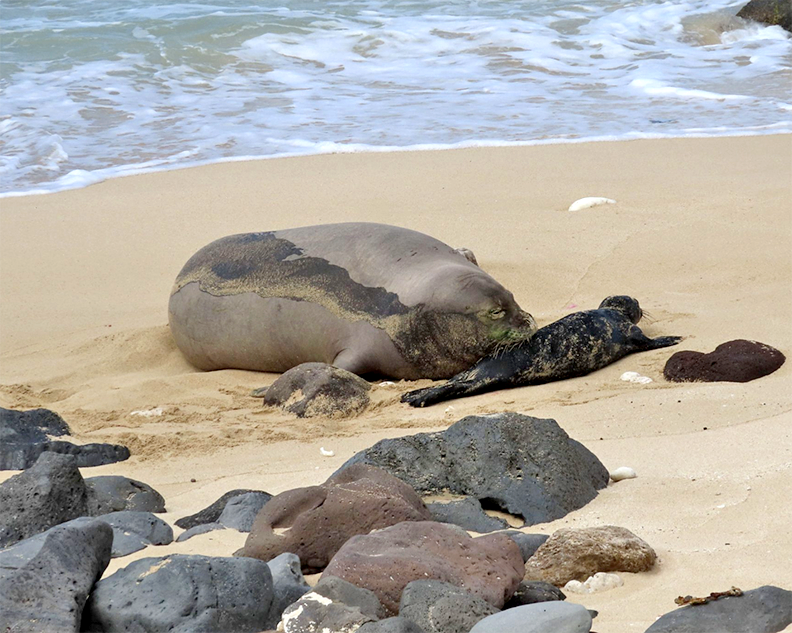By Léo Azambuja
 Sustainability is grounded upon a simple principle. All we need for survival depends on our natural environment, directly or indirectly.
Sustainability is grounded upon a simple principle. All we need for survival depends on our natural environment, directly or indirectly.
Here in Hawai‘i, sustainability is something we should take seriously. In the worst case scenario, a conflict of global scale, we could easily get cut off from our food and energy supply. Chaos would soon follow.
But we don’t need to go to war to feel the impacts of being food- and energy-dependent on Mainland and foreign markets.
We feel such impacts every day by buying food that was not locally produced, and pumping gas in our cars or flipping the switch at home.
It’s the money that leaves the state, going to Mainland and foreign markets. In turn, every dollar spent on local products has a 60 percent increase in value for circulating in the local economy.
To have an idea of how much money we lose, in 2012, the state Office of Planning and the Hawai‘i Department of Agriculture prepared a study on food security. They concluded that replacing only 10 percent of our imported food would keep $313 million dollars in the local economy.
This brings me to an incredible program at the National Tropical Botanical Garden.
Under the leadership — and extensive hands-on, lifetime research — of Diane Ragone, NTGB created the Breadfruit Institute in 2003.
Years after perfecting cloning and propagation, the institute came up with a Global Hunger Initiative that has a potential of putting food on the table of populations living in the most hunger-ridden areas of the world.
And quite sustainably, if you ask Diane.
The concept of agroforestry — intentional integration of trees and shrubs into crop and animal farming systems — is not a novel idea. It has been practiced around the world for centuries. It has huge environmental, economic and social benefits.
Basically, agroforestry has the ability to address hunger without harming the environment, while promoting jobs and keeping the money in the local economy.
Voila, sustainability!
Diane told me about incredible breadfruit agroforests in Micronesia. One of her colleagues, Bill Raynor, surveyed 54 farms in Pohnpei, Micronesia, documenting breadfruit varieties. Some of these farms were complex agroforest systems with usable plants in every level — 120 different useful species.
Coincidentally, the breadfruit almost seamlessly fits into areas of the world that suffer the most from hunger. And just one tree, conservatively producing 100 fruits per year, would generate 220 pounds of nutrient rich, gluten-free food annually.
Since perfecting breadfruit cloning through a partner in Canada, and finding a horticulturist that can successfully grow the clones until they are ready to be planted on the ground, the Breadfruit Institute has already distributed or sold tens of thousands of trees to 35 countries.
They keep looking toward the future, trying to add more varieties to their most-valued tree specimens to be sent to rest of the world.
Here on Kaua‘i, the institute has given away more than 1,100 trees; all free. The next event when free trees will be available is Arbor Day, in the beginning of November. All you have to do is commit to take care of the tree so it’ll grow properly.
 If you ever had breadfruit, you know how delicious it is, apart from an incredible run sheet of nutritional benefits.
If you ever had breadfruit, you know how delicious it is, apart from an incredible run sheet of nutritional benefits.
A cooked, young breadfruit tastes like artichoke hearts. A mature breadfruit is equivalent to a potato on steroids, with many more uses than a regular potato. A ripe breadfruit is soft and sweet, and delicious for dessert.
The only drawback of breadfruit is that it goes bad in one-to-three days after being picked, if left outside. In the refrigerator, it last a little longer. There are also a couple methods to extend its shelf life, like submerging it in water as soon as it is picked.
But if you have a tree in your backyard, none of this is a problem. It is basically a grocery store right outside your door.
Discover more from ForKauaiOnline
Subscribe to get the latest posts sent to your email.




Leave a Reply